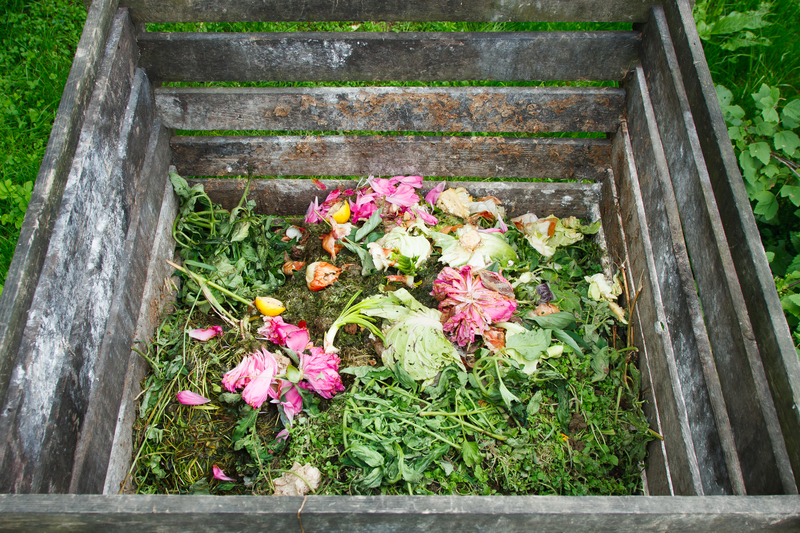Posted on 05/04/2024
In today's modern world, it can be easy to take for granted the cleanliness and sanitation of our cities. However, not all metropolises are created equal when it comes to waste management and overall cleanliness. In fact, some major cities around the world are struggling with a sanitation crisis that presents serious health and environmental concerns. From overflowing landfills to polluted waterways, these top 10 filthiest metropolises are in urgent need of improvement.
1. Mumbai, India
Mumbai is one of the most densely populated cities in the world, with over 12 million people living in just 233 square miles. With such a high population density, waste management is a major challenge for this city. According to the World Health Organization, Mumbai generates over 8,000 metric tons of trash per day, much of which ends up on the streets or in overflowing landfills.

2. Cairo, Egypt
With a rapidly growing population and inadequate infrastructure, Cairo is struggling to keep up with its waste management needs. The city's landfills are reaching maximum capacity, leading to illegal dumping and uncontrolled burning of waste which releases toxic fumes into the air. This has resulted in severe health issues for residents living near these dumping sites.
3. Manila, Philippines
The capital city of the Philippines is facing a major sanitation crisis as its population continues to grow at an unprecedented rate. Overcrowded slums and inadequate waste management systems have resulted in contaminated water sources and pollution of important waterways such as Manila Bay.
4. Lagos, Nigeria
Lagos is another city plagued by rapid urbanization and poor waste management infrastructure. With over 20 million inhabitants, the city generates an estimated 13 million tons of waste annually. Despite government efforts to improve sanitation, Lagos still struggles with open defecation and widespread littering.
5. Dhaka, Bangladesh
The capital city of Bangladesh is home to a staggering 18 million people and is facing a major sanitation crisis. Open sewage drains and inadequate waste management systems have led to severe water pollution, causing health issues for residents and threatening the ecosystem.
6. Karachi, Pakistan
Karachi's population has grown by over 80% in the past two decades, putting immense pressure on its waste management infrastructure. The city's landfills are reaching maximum capacity, and illegal dumping is rampant. This has resulted in contaminated drinking water and widespread health issues.
7. Jakarta, Indonesia
The rapid growth of Jakarta's population has led to excessive waste generation, which the city's waste management system is struggling to keep up with. Uncontrolled dumping and burning of waste have caused air pollution and health problems for residents.
8. Rio de Janeiro, Brazil
Despite hosting major international events like the Olympics, Rio de Janeiro is struggling with a sanitation crisis. With inadequate waste management infrastructure and widespread poverty, garbage often ends up littering the streets or polluting the city's beaches.

9. Nairobi, Kenya
Nairobi's rapid urbanization has led to an increase in waste generation that the city's waste management services are unable to handle effectively. As a result, much of the trash ends up in nearby rivers and waterways, causing serious pollution and harm to aquatic life.
10. New Delhi, India
New Delhi, one of the world's most polluted cities, is also grappling with a major sanitation crisis. It generates over 9,000 metric tons of waste per day, which often ends up overflowing landfills or polluting nearby rivers. The city also struggles with open defecation and poor sewage treatment facilities, leading to contaminated water sources.
Pros:
- Highlighting these top 10 filthiest metropolises brings attention to a global sanitation crisis that needs urgent action.
- Improving sanitation in these cities can greatly improve the health and quality of life for millions of people.
- Proper waste management can also have positive environmental impacts, reducing pollution and protecting natural resources.
Cons:
- Improving sanitation in these cities will require significant investment in infrastructure and resources.
- Governments may face challenges in implementing effective waste management systems due to bureaucratic processes and corruption.
- As these cities continue to grow, the sanitation crisis may worsen if not addressed promptly.
Tips:
- Education and awareness programs can help educate residents about the importance of proper waste disposal and encourage them to do their part in keeping their city clean.
- Governments should prioritize investing in sustainable waste management infrastructure to effectively handle the growing waste generation in these cities.
- Collaborative efforts between governments, NGOs, and citizens are crucial in addressing the sanitation crisis in these metropolises.
Takeaways:
- The rapid urbanization and population growth in these cities have put immense strain on their waste management systems.
- Inadequate waste management has resulted in health issues, environmental pollution, and harm to wildlife.
- Urgent action is needed from governments, organizations, and individuals to improve sanitation in these top 10 filthiest metropolises.
Conclusion:
The global sanitation crisis highlighted by these top 10 filthiest metropolises serves as a reminder of the urgent need for better waste management worldwide. It's time for governments to prioritize this issue and work towards sustainable solutions for a cleaner and healthier future. As individuals, we can also play our part by making conscious efforts to reduce our waste generation and properly dispose of our trash. Together, we can make a positive impact and create a cleaner world for generations to come.
Latest Posts
Tips for Proper Disposal of Regular Waste
Garbage Cleanup Bags - Efficient Skip Substitute

































 Get a Quote
Get a Quote